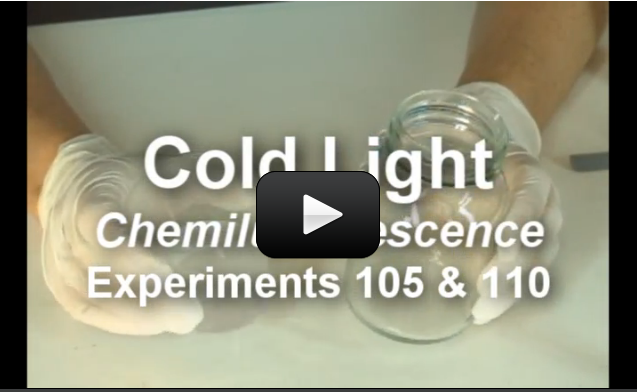This experiment is for advanced students.
Glo-sticks! Parents hang them from their trick or treaters, backpackers read with them light late at night in a tent. Glo-sticks work on the principle of chemiluminescence. Chemiluminescence is defined as emitting light without heat as the result of a chemical reaction.
Please login or register to read the rest of this content.


I was going to proceed with the experiment, but I don’t have access to it because it’s for advanced students. Why is this experiment linked for 5th graders if it’s inaccessible to them?
It’s up to you! I would definitely go for it if she’s interested.
If you decide to proceed, please have her do so with adult supervision.
This experiment was listed in the 5th grade section, but at the top of the Cold Light web page it says “This experiment is for advanced students.” Do I skip this experiment, have my daughter just watch the video, or proceed with the experiment?
Hi Michelle,
I’ve sent you a private email. ALso the cold light experiment requires additional ingredients not included in the C3000. Find direct order links for luminol in the main shop list for the unit.
Hi Aurora,
I purchased the Science Mastery Diamond program and it came with the Chem C3000 kit, however, 2 of the above listed chemicals are not in the kit. They are Luminol and Sodium Hydroxide. Can you tell me where in my supplies I’d find these 2 ingredients?
thanks!
Michelle
Although K4Fe(CN)6 looks really similar to K3Fe(CN)6 on paper, the K4Fe(CN)6 is yellow like a lemon, while K3Fe(CN)6 is bright red. Both have the same name, but I am not sure how K4Fe(CN)6 will work in the lab. I am going to ask one of my chemistry colleagues and get back to you. In the meantime, where did you find a source for K4Fe(CN)6?
Hello,
Please tell me if we can substitute K4Fe(CN)6 for what is asked for in this experiment: K3Fe(CN)6.
I cannot find it anywhere or in too large a quantity.
Please help.
M